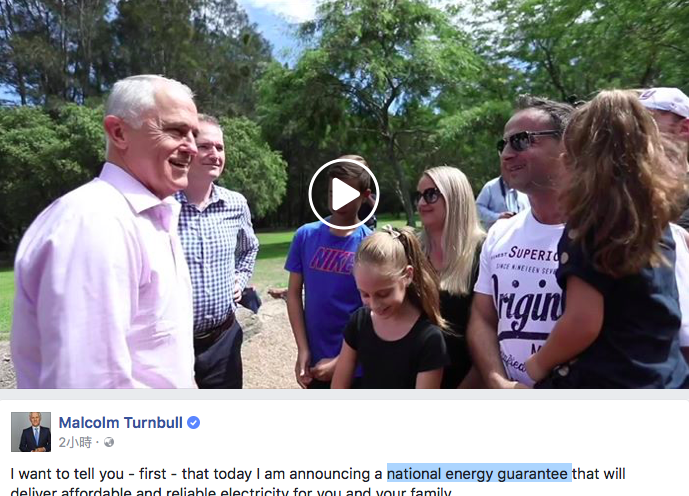Continuing its role as a deadlock breaker on national energy policy issues, the CEC has thrown its weight behind the NEG moving forward. But it wants to see a number of key issues resolved and more ambition behind the policy’s emissions reduction targets.
“We remain open minded about the potential of the policy and believe this proposal warrants further detailed design and consultation,” said CEC Chief Executive Kane Thornton in a statement today. “We encourage the COAG Energy Council to support this.”
State and territory ministers from right around Australia will meet on Friday, in what will be the 16th meeting of the COAG Energy Council. They will discuss whether the NEG, proposed by the Federal Government, will move forward.
While the newly-formed Energy Security Board (ESB) is doing much of the heavy lifting in terms of formulating the Guarantee policy and settings, the emissions target set for the electricity sector under the proposed mechanism is determined by the Federal Government.
The ESB issued its first public NEG consultation paper in February. A more detailed, and amended, policy-design document was provided to the states last weekend, and subsequently leaked to the press.
Based on this document, the Clean Energy Council said today that some its “key policy concerns” has been addressed.
“Based on our understanding of the proposal, the adoption of a central register for the emissions obligation, the use of flexible contract options to demonstrate compliance and a range of measures to address market power and competition concerns are all welcome steps forward,” said Thornton.
While there are a number of contentious issues within the latest iteration of the NEG policy proposal, including the role of rooftop PV in meeting electricity retailer emission reductions, the major sticking point between the Labor states and the feds will likely be the proposed emission reduction target – set at a measly 26% by 2030.
The CEC said that its support of the NEG will be contingent of its concerns regarding the target being met.
“One of the limiting elements of the current policy is that the level of new investment – that is critical to driving down power prices – will be determined by the nature and level of the emissions reduction target under the policy,” said the CEC’s Thornton. “The Clean Energy Council remains concerned by the low level of the Federal Government’s proposed emission reduction target and the potential inclusion of emission offsets which would further dilute the incentive for new investment in the domestic energy sector.
“Unless the emissions reduction target is higher, there will not be enough new power generation built to replace the coal-fired power stations which will retire in the coming decades.”
In 2015, the CEC played a crucial role in resolving the deadlock regarding the 2020 Renewable Energy Target. It backed a reduction of the target, a move the then Abbott Federal Government was intent of achieving, in order to provide some form of policy certainty for large scale solar PV and wind developers.
In hindsight, the decision by the CEC was a good one – as is evident in the current robust health of the sector and very large pipeline of projects currently under development. This pipeline has seen economies of scale develop for utility scale solar PV in particular in Australia, and some of the high competitive project economics being demonstrated today.
In issuing its support for the NEG today, the CEC has called for four issues to be addressed:
- The emissions target can be “easily” ramped up by future governments;
- The emissions reduction potential of the electricity sector be recognized through an increased target;
- The NEG does not prohibit states and territories to delivering higher levels of renewable penetration;
- That state and territory targets be omitted from the NEG settings allowing for a sufficiently robust “investment signal.”
In the lead up to the COAG Energy Council meeting on Friday, there has been near universal support from industry and market observers for a clear policy to be put in place for Australia’s electricity sector beyond 2020. Ongoing uncertainty leads to delayed investment decisions, market concentration and higher electricity prices. A relatively benign NEG, it seems, is better than none at all.
This content is protected by copyright and may not be reused. If you want to cooperate with us and would like to reuse some of our content, please contact: editors@pv-magazine.com.









By submitting this form you agree to pv magazine using your data for the purposes of publishing your comment.
Your personal data will only be disclosed or otherwise transmitted to third parties for the purposes of spam filtering or if this is necessary for technical maintenance of the website. Any other transfer to third parties will not take place unless this is justified on the basis of applicable data protection regulations or if pv magazine is legally obliged to do so.
You may revoke this consent at any time with effect for the future, in which case your personal data will be deleted immediately. Otherwise, your data will be deleted if pv magazine has processed your request or the purpose of data storage is fulfilled.
Further information on data privacy can be found in our Data Protection Policy.